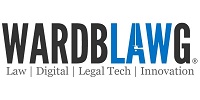Here’s everything you need to consider when choosing a document automation solution. First, consider internal use and adoption, and secondly, external use by your clients.
Ease of use
You need quick adoption to prove ROI, so the solution needs to be easy to use. This means that to create questionnaires and draft legal forms or legal documents, you don’t need coding skills, nor the software vendor to come in and do it for you. Aim for a solution that integrates with the platforms where its users currently live, like Microsoft Word.
Appearance and user interface
First impressions count when it comes to new tools. Lawyers have to be impressed by a software solution to stop it becoming shelf ware. You can’t compromise on this due to price — there’s no value at all in cheaper software that goes unused because lawyers hate its look and feel. Find an interface that excites your users.
Ability to gather data
Smart law firms offer clients management information gathered from their contracts data. Pulling data on the most negotiated clauses, or proportions of different types of document, can help clients to reduce risk and ultimately save money. It’s a great way for firms to differentiate their service from competitors.
Ability to ‘suite’ documents together
Some solutions let users create a suite of related documents based on the same data input. For example, a real estate lawyer could generate a lease, a rent deposit deed and a licence for property alterations without having to repeat the data entry. This saves time and drives efficiencies across a range of areas, like construction appointments and warranties, or business restructuring suites of administrator sale documents.
Integrations
Save time by finding a solution that speaks to your existing systems. For example, can it pull information from your accounting system to automate client letters? Can it align with your workflow tool to make sure document approvals happen at the right time? Smart integrations can let you pre-populate documents before the lawyer even opens them.
Ability to build in approvals and workflow
The best document automation solutions include governance and workflow in their questionnaires. This means senior lawyers can embed best practice and advice into the workflow, allowing junior lawyers to train at the point of need, and generate best-in-class documents at a much more competitive margin. Senior lawyers can sign off with smart workflow configuration.
External use by your clients
Fee models for client-facing functionality
Law firms might want to allow clients and third parties direct access to the questionnaires, either to add value or for business development. This might attract an extra cost from the software vendor — clarify this and include it in your business plan.
Customisable client areas
If clients log in directly, their workspace must be secure and separate from other clients, so your solution must let you create sub-sites. You will want to customise these with client branding to make them feel at home when they use the tool.
Ability to build in approvals and workflow
Clients often use document automation to help with internal governance between their business and their legal team. The inclusion of certain values or parties in a document might trigger the involvement of the legal department for senior sign-off, for example. Make sure your solution has workflow you can easily implement, rather than creating a capacity issue for the in-house team.
Reporting capability
Clients would benefit from data — preferably in accessible dashboards — that help them improve the efficiency of their contracting, just like law firms. Discerning clients have started to demand this feature — make sure you choose a solution that delivers.
This article was taken from the Thomson Reuters definitive guide to legal document automation for law firms. To read the full guide please click here.


